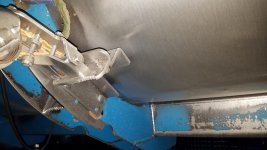So...
Can anyone add what metal spraying/deposition processes *might* work for this? I know there's no such thing as a perfect process, and it might not do everything I want. But I'm looking for help shortening my search based on others' experience.
My knowledge of using other approaches to help wear is very good... because we've tried them all over the years! Coatings like bedliner are ok for straw. Not good for grain as the stream gets under them and lifts the sheet off the metal.
Flame spraying works very good on relatively small and thick parts that can withstand the heat. That's what I'm hoping to duplicate.
Rubber sheet is good, and UMHW is excellent... except you have to have a way to secure them in place. If you lose a piece under the machine it's not a problem. Not the case when you lose one INSIDE the machine and attempt to thresh it. Rubber doesn't glue well, and UMHW not at all. If you bolt or rivet it through, the grain wears the heads off first (even if countersunk), and the whole sheet pops lose and gets eaten.
I've learned to be very strategic about how things are attached in wear areas. I do a lot of welded patches, and they all get numerous plug welds in addition to fillets around the patch. Fillets alone get worn through quickly on the upstream side where the flow hits it. Then the sides. Eventually the grain wedges under the patch, peels it up using the thinned downstream weld as a hinge, where it can pivot up and get caught by an auger or conveyor.
The goal is to have the wear material come off in little bits that won't hurt anything as they pass through.





